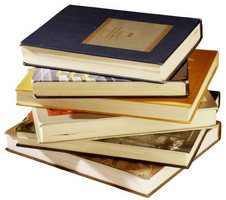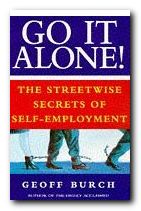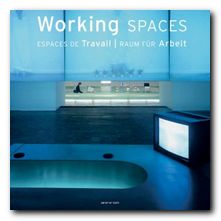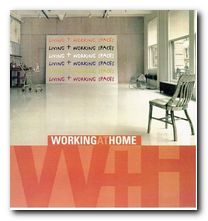What is a book summary?
A summary of a book is a digest of all its main points. It should be a shorter version or a précis of its main arguments or topics – depending on the type of book.
It should capture the purpose of the book and include the most important parts of the original. Smaller details and illustrative examples will not be included.
The summary should re-cast and express the original material in your own words. It is not enough to quote parts of the original text. That would be a collection of extracts rather than a summary.
A summary should be a reasonable and impartial account of the original, without intruding any bias or value judgements. If you add your own opinions, it will become a book review rather than a summary.
How to summarize
Before you start, get some idea of the length and type of summary you are going to create. Have a look at examples from the field in which you’re working. If this isn’t possible, set yourself a word limit and create an outline plan.
First of all check your book for a table of contents. If it has one this will immediately provide you with some idea of its structure and the nature of the topics it covers.
Next look through the book quickly to get a rough idea of its subject and scope. This will give you a general idea of what to cover in the task ahead. If the book has chapters, these can provide a set of headings for your plan.
You should immediately start making notes. Don’t worry if they are not grammatically complete or well formed. These are the raw materials from which you can make your finished summary later.
Your main task is to capture a general outline of the contents. The amount of effort you put into
creating the summary will depend upon the seriousness of the task and the amount of time you have at your disposal.
Draw up a list of the topics the book covers – or make a diagram. A simple picture of boxes or a spider diagram can often be helpful. Some people visualise their ideas in this way, and it can be a fruitful approach for ‘non-literary’ people.
Look out for topic sentences that signal the main lines of arguments. These are often the first sentence in a paragraph. In good quality writing the remainder of the paragraph should explain and expand on the topic sentence.
Write a one or a two-sentence account of each section you identify. Focus your attention on the main points. Leave out any illustrative examples. Don’t be tempted to fill out your work with a detailed examination of minor details just to fill up the space. This will only weaken the summary.
Work through the text to identify its main sections or arguments. These might be summarized as short paragraphs. Remember that the purpose and definition of a paragraph is that it deals with one issue or topic.
Writing the summary
When you have finished reading the book, you should have a series of jottings, notes, and sentences, maybe a list of topics, and perhaps some half-formed observations. These fragments need to be arranged in some logical or persuasive order, then fashioned into something readable.
You are not obliged to follow the same structure or sequence of events as the original text, but your summary certainly needs a shape or structure as an independent piece of writing. You might choose any of the following approaches in arranging the items of your notes:
- logical progression – from A to Z
- increasing significance – from small to big
- chronological order – from older to newer
- narrative sequence – from first to next
- grouping of topics – fruits, vegetables, wines
You might create the plan first, then fill in its parts with your own text. Alternatively, the plan might emerge from your work as you flesh out the parts into complete sentences. Don’t imagine that this part of the process can be done easily at your first attempt.
Expand each of your notes or topics until it makes a grammatically complete sentence. Then put statements dealing with the same topic next to each other. Be prepared to move the parts around until you find their best order.
The central structure of your results will be determined by the content of the book you are summarising. But any summary will be more successful if it has a good introduction and a satisfying conclusion.
The introduction is usually a general statement which presents an overview for the reader. It should launch the subject of enquiry and give some idea of what is to come. The conclusion does the converse – it wraps up the summary with a general statement that encapsulates the whole piece of writing.
Summary or review?
There is a difference between a book summary and a book review. A summary should be a reasonably neutral account of the book and its contents, whereas a review is a personal response to the book which might include criticising or praising the author’s approach. A review might also draw comparisons with other works of a similar kind.
In a summary you will be keeping your personal opinions in check, and concentrating on giving the best account possible of what the book offers. In a review on the other hand, you are often expected to make some sort of evaluative judgement on the approach that has been taken. The sample summary that follows combines both of these approaches.
Sample summary
Chris Baldick is a specialist in literature of the early twentieth century, and this collection of his essays covers the period 1910 to 1940, which is essentially the highpoint of what is now called ‘modernism’.
In terms of structure the first group of chapters covers the social, linguistic, and aesthetic background of the period, and then he discusses writers grouped according to literary forms – short stories, drama, poetry, and the novel. He highlights major figures – James Joyce, Virginia Woolf, D.H.Lawrence, and T.S.Eliot – but also considers writers who were once best sellers and held in high esteem, such as Arnold Bennett and Somerset Maugham. These are accompanied by almost-forgotten figures such as Dornford Yates, Aldous Huxley, and Elizabeth Bowen who were very successful in their own time. Part three of the book covers sociological issues such as English names, the Great War, childhood, sexuality, and censorship.
He starts with a well informed discussion of the writer’s relationship with literary commerce. Those who earned most (Arnold Bennett) were successful at exploiting new markets and media such as the newspapers and magazines. He reveals those writers who were sponsored by rich patrons (Joyce) as well as others who were kept by a wealthy spouse. D.H. Lawrence not only made a handsome profit from the subscription-published Lady Chatterley’s Lover but invested it in stocks and shares on Wall Street and made even more.
Each chapter is prefaced by a discussion of new words that became current in the period, a device which provides both flavour and intellectual context. He also includes an interesting consideration of theories of the novel. This involves a detailed consideration of first and third person narrative modes.
There are separate interpretations of all the major works of the period – Howards End, Mrs Dalloway, Ulysses, Women in Love pitched at a level which make his approach to literary criticism accessible to beginners and interesting to those who know the novels well.
The other major strand of his argument is a sympathetic reconsideration of the lesser-known works of the period, such as Walter Greenwood’s Love on the Dole, Elizabeth Bowen’s The Death of the Heart, Dorothy Richardson’s Pilgrimage, and Aldous Huxley’s Chrome Yellow, as well as novels by Robert Graves, Naomi Mitchison, and Sylvia Townsend Warner.
The latter essays are studies in cultural history which take in the attitudes and issues of the period as they were mediated via its literary products. This covers the shattering effect of the first world war on the romantic and pastoral visions of Englishness which had been the establishment ideology during the first two decades of the century. He then traces this effect through the twenties and thirties, showing how a view of modern Britain came to be formed.
There’s a very good collection study resources and suggestions for further reading. These entries combine notes on the author biographies, together with available editions of their major works, plus secondary studies and criticism.
This is the fifth volume of the Oxford English Literary History series. It can be read continuously as an in-depth study of the period, dipped into as an introduction to literary modernism, or used as a rich source of reference.
Chris Baldick, The Modern Movement, Oxford: Oxford University Press, 2004, pp.477, ISBN 0198183100
Why summarize?
There are a number of reasons why a summary of a book might be required. The following are the most common in academic and commercial life.
Exercise
A book summary is often set as a writing exercise, instead of a formal academic essay. It tests both understanding of the book’s content, an ability to digest and express its ideas, a grasp of structure, and the writing skills necessary to produce a readable préis.
The task in such cases is to show your ability to put somebody else’s ideas into your own words, to give a coherent account of the topic under consideration, to produce a coherent structure for your account, and to come to some sort of conclusion concerning the book’s overall value to another reader.
Research
In some subjects of study, you may be required to provide what is called a ‘literature review’. This is a survey of currently available knowledge in the subject. Its object is to show that you understand the latest state of research in your subject.
You are expected to have a full command of the terminology of the subject, and to show that you are aware of its theoretical and methodological issues. You will also be expected to have a full grasp of the academic writing style with regard to footnotes, referencing, and bibliographic presentation.
Assessment
Sometimes a book summary is called for so that other people can judge whether it is suitable for their requirements. This could be when providing librarians with information on which they will base purchasing decisions. Or it could be written for the research division of a company with information which might inform their development plans.
In both cases an impartial summary of content is required, along with an account of any special features which might help the reader reach a decision.
Cataloguing
Sometimes a summary of a book is required for a catalogue, a card index, or an inventory. In such cases the summary is likely to be very short – just enough so that somebody else can see if it’s the sort of book they require.
In these cases it’s important to record all the book’s metadata – that is, information about it’s author, title, publisher, date of publication, and ISBN number. You might also need to describe it physically – noting if it is hardback or paperback. if it contains illustrations, and even its size on the shelf.
Summarize a book without reading it completely?
Is it possible? The quick answer to this question is – “Yes – but only if you are experienced”. You require an intimate knowledge of the subject in question, and you need to be confident in writing summaries. But how is it done?
If you know your subject well, you will immediately put into effect the summarizing skills listed here above. You take into account such matters as the level at which the book is pitched, its potential readership, the range of its contents, its structure, and any critical apparatus which may be attached, such as illustrations, tables, bibliographies, and suggestions for further reading. This provides you with an overview.
Then you need to glance through the preface or any introductory remarks to pick up the general argument or the individual approach of the author(s) to the subject. This requires good skim-reading skills.
Most books are split up into sections or chapters. You need to look through these quickly, making a summary of each one – then combine the notes you make to form a general summary. It may not be a lengthy or in-depth account of the book, but it should be enough for your purpose.
© Roy Johnson 2012
More on How-To
More on literary studies
More on writing skills
 1. In preparation for writing a piece of work, you should take notes from a number of different sources: course materials, set texts, secondary reading, interviews, or tutorials and lectures. You might gather information from radio or television broadcasts, or from experiments and research projects. The notes could also include your own ideas, generated as part of the planning process.
1. In preparation for writing a piece of work, you should take notes from a number of different sources: course materials, set texts, secondary reading, interviews, or tutorials and lectures. You might gather information from radio or television broadcasts, or from experiments and research projects. The notes could also include your own ideas, generated as part of the planning process. Many people have difficulties knowing how to use and in a sentence. That’s possibly because it is such a common word.
Many people have difficulties knowing how to use and in a sentence. That’s possibly because it is such a common word.



